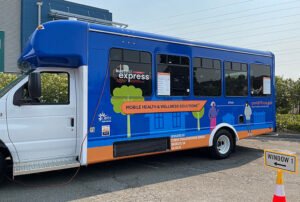February 19, 2015; Sierra Sun Times
Rural areas never seem to get a break under most national policies, if only because they aren’t designed with rural areas in mind and leave things to state governments that sometimes do don’t rural any favors. A new research paper from the Stanford Institute for Economic Policy Research written by assistant professor of economics Michael J. Dickstein suggests that the Affordable Care Act hasn’t benefitted rural areas the way it has urban areas due to the different approaches of states in defining and drawing “coverage areas.”
When a region chosen as a coverage area combines rural areas and nearby or adjacent urban areas, the number of insurers (and number of coverage plans) available to rural areas increases, and the costs of insurance, due to competition and other factors, are lower. However, some states, due to the discretion that they have, aren’t defining coverage areas that way. Florida has made each of its 67 counties its own coverage area. Texas has created regions around each major city, but created one big region for the remainder of the state—that is, non-urban communities. Dickstein suggests that insurers tend to avoid regions of “low urbanity” as unattractive markets.
Sign up for our free newsletters
Subscribe to NPQ's newsletters to have our top stories delivered directly to your inbox.
By signing up, you agree to our privacy policy and terms of use, and to receive messages from NPQ and our partners.
Dickstein compared the healthcare fates of two rural areas in Tennessee, one a rural area outside of Memphis that the state included in the Memphis coverage area, the other a rural area outside of Nashville that the state did not include in the Nashville coverage area. He found that only one insurer decided to serve the rural region outside of Nashville, and residents of that region faced benchmark premiums that were seven percent higher than the premium costs of residents in the Memphis rural area. It may be that insurers are avoiding small markets and markets with pockets of poverty. That certainly covers a lot of rural America.
Issues of the implementation of the Affordable Care Act are often not being determined at the federal level, but at the state level. In addition to questions of how states define coverage areas, there is the problem of states that have declined to expand Medicaid coverage, many of those states in the Southeast and Southwest where there are large rural areas. There is much research that shows how hospital closings have been much higher in states that have declined to expand Medicaid coverage and that rural residents have fewer health care and health insurance coverage options in those states. Vann Newkirk and Anthony Damico writing for Kaiser Family Foundation note that uninsured rural residents are more likely than uninsured metropolitan area residents to end up in the “coverage gap” between publicly subsidized health coverage through Medicaid and subsidized coverage on the exchanges. The failure of states to expand Medicaid eligibility means less coverage for rural residents and generally less revenue stability for rural hospitals as well.
Years ago, it was sort of commonplace to bemoan state legislatures’ being dominated by rural interests, leading to policies that shortchanged urban areas. Now, under the ACA, state governments are shortchanging their rural constituents by drawing coverage areas that work against the interests of rural regions and limiting Medicaid coverage, leaving those constituents in a healthcare coverage dilemma. Public policy is still giving rural residents the short stick in the draw. Rural nonprofits and rural funders had better gin up their healthcare advocacy unless they want to see the ACA turned into a tool that leaves rural areas even further behind.—Rick Cohen












